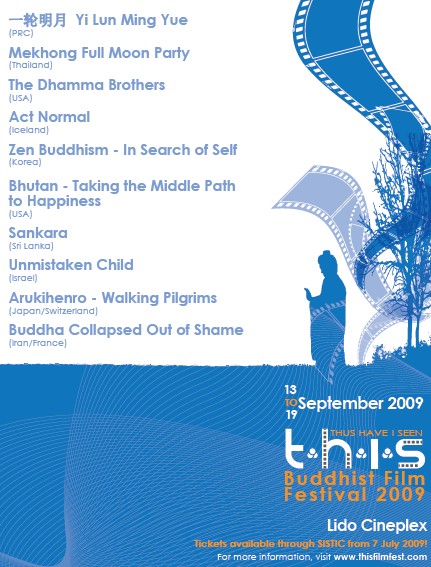
Many years ago, a few hundred moons gone past, a boy was born to a family of the Forest (Lim) clan, on an Island they say once had a Lion roar
The boy grew up, loving the land that fed his family, he had this thing with flags crescent moon and five stars, decked in red and white halves
Perhaps he knew what these stood for, perhaps he is a patriot or perhaps he just love the chocolate candy that came in the flag stem core
So many years have passed, he’s gone through some studies, work and play, he decided that life is too precious to not try the Enlightened Buddhist Way
Following his preliminary monastic training, in a foreign land of freedom, he return to find his island country decked not with crescent moon and stars, but a ferris wheel and racing track
Give me
Merlion or the Angmo Raffles guy anytime instead, he shouted!
A statue of our founding statesmen like LKY would be something he would be proud to share with everyone compared to the ferris wheel, F1 tracks or GDP numbers!
Oh! He wonder out loud, is life really just about getting better grades and bigger houses? He thought if getting these were meant to lead to happiness, then why are people getting more stressed and unhappy driving around and not sleeping well in their upgraded houses?
Perhaps we need to come back to basics and remember what those crescent moon and stars mean to us as we wish our nation Happy Birthday
Rich or poor, this is our nation, with our friends and families, both born here and from shores afar
Remembering that red symbolises “universal brotherhood and equality of man”, and white, “pervading and everlasting purity and virtue” and that like the crescent moon, we are a “young nation on the ascendant”
While pursuing the 5Cs, we shall forget not that we will do so with our common ideals of democracy, peace, progress, justice and equality in our mind … and in our heart!
As I think of our Nation’s flag, and what it symbolises, I wonder why we forgot to add “Happiness” to the five?
Then I figured, it must be that Happiness is everyone’s goal, surely we don’t need to state something so universal right?
Right? … Let’s not forget that.
Oh Singapore, I love you so, but do you love me back or am I just another number?
Happy Birthday Singapore.
A Buddhist Monk ^_^ A Singapore Son
References:
http://vs.moe.edu.sg/national_symbol.htm
http://en.wikipedia.org/wiki/Flag_of_Singapore
From the MOE website:
Origin
The National Flag of Singapore is a symbol of statehood. It replaced the Union Jack which had flown over Singapore for 140 years (1819-1959). It was the committee headed by Dr Toh Chin Chye (the then Deputy Prime Minister) which first conceived of and created the flag. Together with the State Crest and the National Anthem, it was unveiled on 3 Dec 1959, at the installation of the new Head of State, the Yang di-Pertuan Negara, at the City Hall steps. Upon independence in 1965, it was adopted as the National Flag.
Meaning
Our National Flag consists of two equal horizontal sections, red above white. In the top left canton is a white crescent moon beside five white stars within a circle. The features of the flag were not arbitrarily chosen. Each feature has its own distinctive meaning and significance: red symbolises universal brotherhood and equality of man; white signifies pervading and everlasting purity and virtue; the crescent moon represents a young nation on the ascendant; and the five stars stand for the nation’s ideals of democracy, peace, progress, justice and equality.


